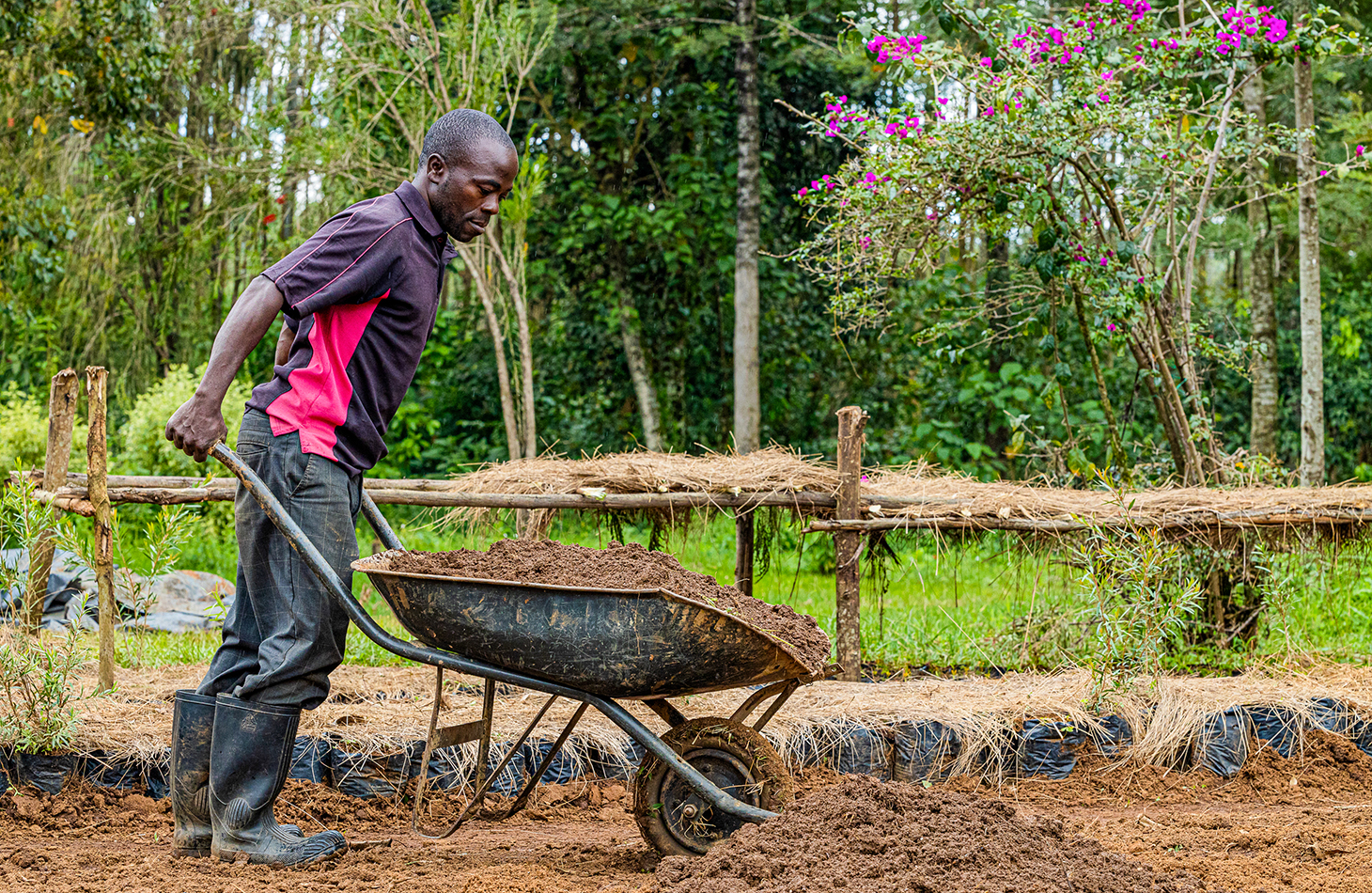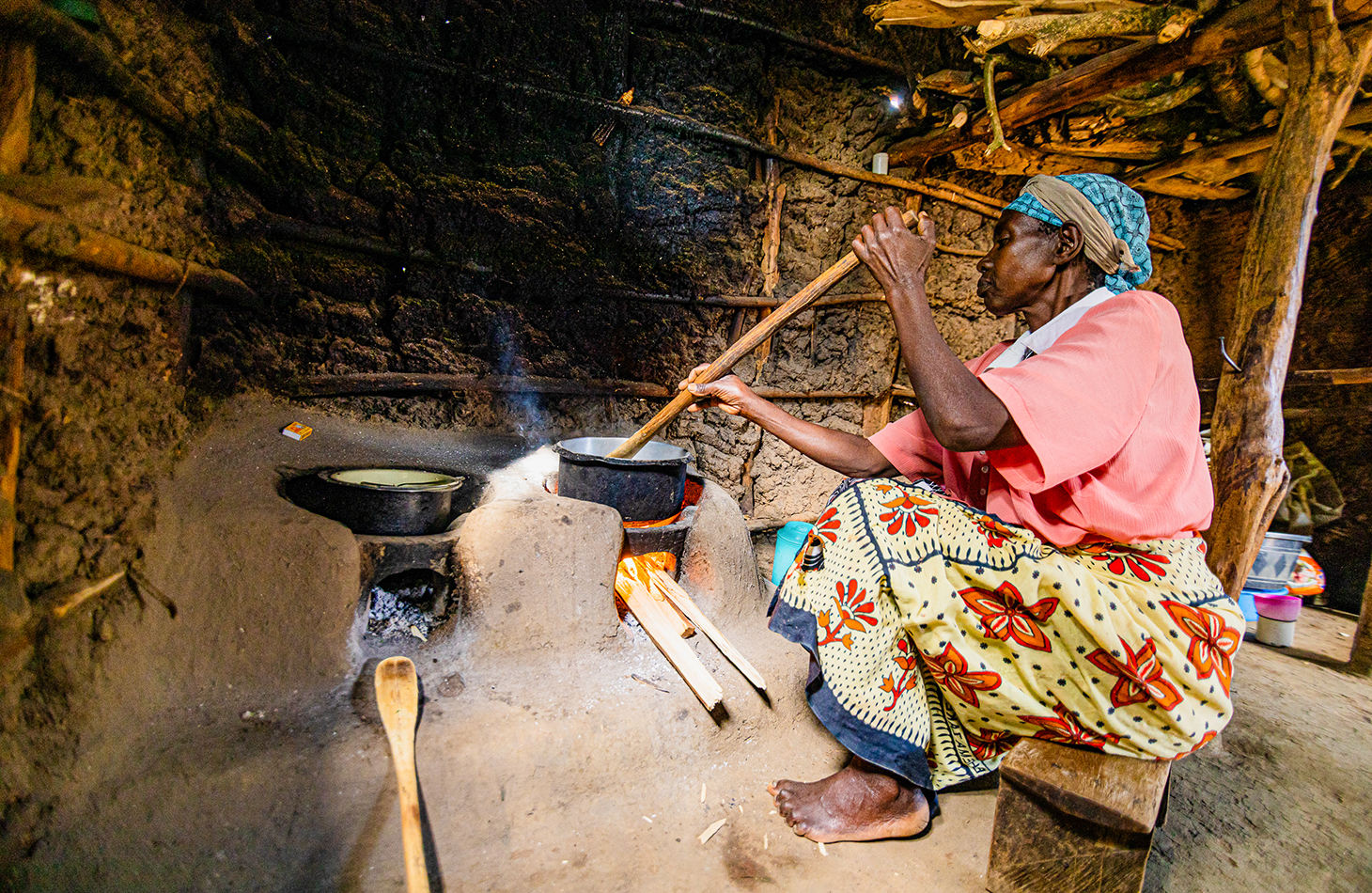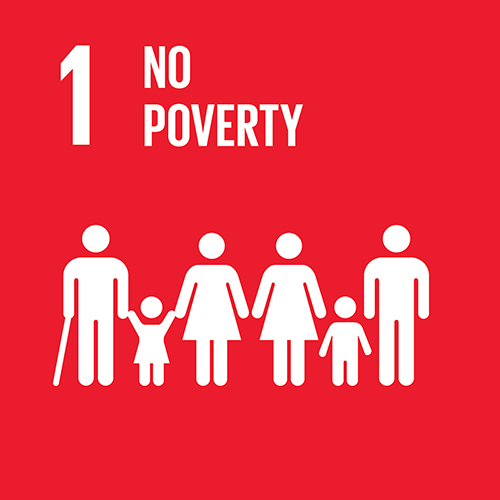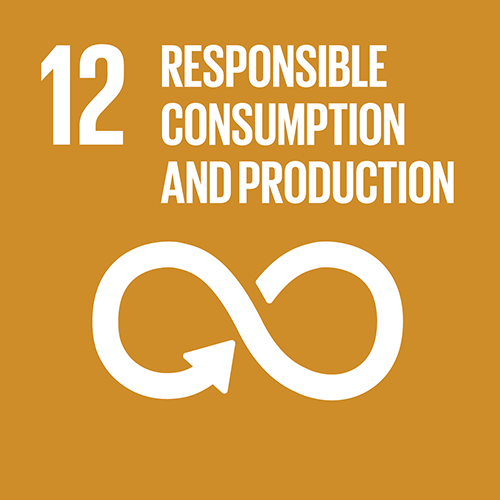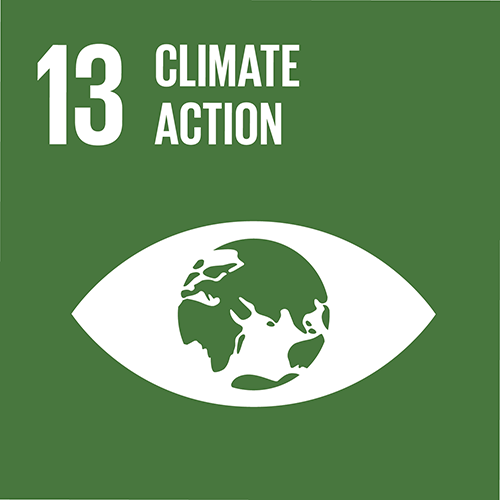Less Deforestation of the Rainforest due to Efficient Cook Stoves in Kenya
Project type: Efficient cook stoves
Project location: Kakamega, Kenya
Project status: In operation, credits available
Annual emission reduction of the whole project: 290,426 t
Locally produced efficient cook stoves reduce wood consumption in Kenya and help to preserve the unique vegetation and biodiversity of the Kakamega rainforest. The stoves have a cleaner burning process and thus decrease indoor air pollution and associated acute respiratory infections in women and children. Moreover, savings in burning unsustainably harvested fuel wood cut down CO₂ emissions.
Tens of thousands of efficient cook stoves were installed in rural households in communities adjacent to Kakamega Forest in Western Kenya since the start of the project. Kakamega rainforest is Kenya’s last remnant lowland indigenous forest and is home to an immense variety of unique and threatened animals and plants. The northern part is a protected area belonging to the Kakamega National Reserve. Despite having a protected status, Kakamega forest is severely damaged and degraded due to the pressure on its resources. The surrounding area is one of the densest populated rural regions of the world (> 580 inhabitant/km2) and 90 percent of the people depend on forest resources for fuel wood and livelihood. The Kakamega Forest has lost almost 50 percent of its area since it was formally gazetted in 1933.
I am happy. Before I had the cook stove, I had to go to the forest every day, which is a 15-20km walk with all the heavy wood on my head. Now I only have to go to the forest twice a week.
Households in the project area used to cook on a traditional three-stone fireplace and women and also girls spent an average of 15 hours per week collecting fuel wood from Kakamega forest for home use. However, households that are using improved project cookstoves are spending only 4.9 hours per week to collect firewood. Poverty rate around Kakamega Forest is above 28.5 percent and unemployment above 25 percent. This called for a simple, affordable and locally produced efficient stove technology to reduce wood consumption and preserve unique vegetation and biodiversity of Kakamega Forest. The project therefore identified the efficient Upesi cook stove as an appropriate technology for this region. Nowadays, 90 per cent of all households in 3-5 kilometres distance to the rainforest have an efficient cook stove – a great success! However, most households located further away from the Kakamega forest still use traditional three-stone fireplaces for cooking.
Efficient stoves are up to 50 per cent more efficient
The Upesi stove is a natural ceramic stove and is 35-50 percent more efficient than the three-stone stove. It is manufactured and marketed at a subsidized price by local potter groups. The efficient stove is not a portable stove, but is being fix installed in households. This is more convenient for cooking since traditional dishes such as Ugali (made from maize flour) need to be stirred during preparation process.
Income and time savings lead to additional benefits
The project creates local jobs as office workers, field monitors, sales persons and artisans. The income is used to pay school fees, for example. Additionally, women and girls from families having an efficient stove are not any longer exposed to the smoky open fires and have to spend less time on collecting firewood. A lot of women use this time for an income such as beekeeping or products from Ocimum kilimandscharicum, a wild indigenous medicinal plant (see pictures). Such small business opportunities which generate a regular income are essential for the people in rural Kenya to get independent – which is very important to be able to develop long-term perspectives.
I have been able to get income as an installer which I have used to support my children with school fees. I have so far installed 3,000 liners since 2014.
Project and implementation partner of myclimate
The project is developed and implemented by the Kenyan organisation Eco2librium. Eco2librium was being honored again as Best for the World in 2017, 2018, 2019, 2021, and 2022 placing it among Global B Corporations and also being called Changemakers – those companies in the world taking the lead. The recognition follows a rigorous and comprehensive assessment of a company's impact on its workers, community, and the environment.
Where exactly does the money from carbon financing go?
The carbon finance flows not only in subsidies the stoves but also into educating local stove artisans in the production and installation of the efficient stoves. The carbon finance is also used to purchase the stove liners from production groups, distribute the liners, and pay installers to install the liners into homes. Upesi stoves are sold to community households at reduced/subsidized prices. The money also flows into training households by field officers to use and maintain them correctly. Additionally, campaigns are being financed to raise awareness among the communities regarding the subjects of renewable energies and energy-efficiency. Eco2librium buys ceramic stove liners from the twelve stove production groups and transports them to installer groups located within the project area. Eco2librium has trained more than 500 women and youth from the community to install the stoves in the household kitchens. These are referred to as installers who work in organised groups. Each installer group has a “supervisor” who initiates and/or organises all stove sales and installations. Once installations are completed, the supervisors complete the purchase and sales agreements with customers and deliver them to the staff.
Monitoring and review of the project
The sale of the emission reductions achieved by the project is essential for the project, as to create jobs, mitigate the negative impacts of climate change, and to improve the livelihoods of the communities The project is registered with Gold Standard. The project is monitored annually and then verified and audited by an independent third party. Further information can be found under "Documentation".
This project contributes to 9 SDGs*
*as at the end of 2023. Find out how myclimate reports these SDGs in our FAQ.
The following SDGs are verified by the Gold Standard:
Households benefit from having to spend less time for collecting firewood. A household saves on average 156 hours per year. The time saved is used in income generation activities and hence helps to reduce poverty.
98.9% of beneficiaries say that indoor air quality has improved.
The project conducts various training programs with over 836 people each year. The project helps to keep the girls in school by reducing the amount of time spent collecting firewood.
904 women receive an income earning 5 times more than what they made prior to the project. Women are also empowered to participate in the income generation activities and support their families.
Over 393,819 people benefit from efficient and clean cooking, with 94,132 efficient cook stoves installed by 10 stove production groups.
659 people receive an income earning 5 times more than what they made prior to the project.
Each stove reduces firewood consumption by 2.3 tons per year.
Each stove avoids about 3.3 t CO2e per year.
The project saved so far over 939,941 tonnes of firewood equaling 3,356 ha of rainforest.
Situation without project
Use of non-renewable biomass fuelsDocumentations
Project standard

Awards

Project number
7138

















